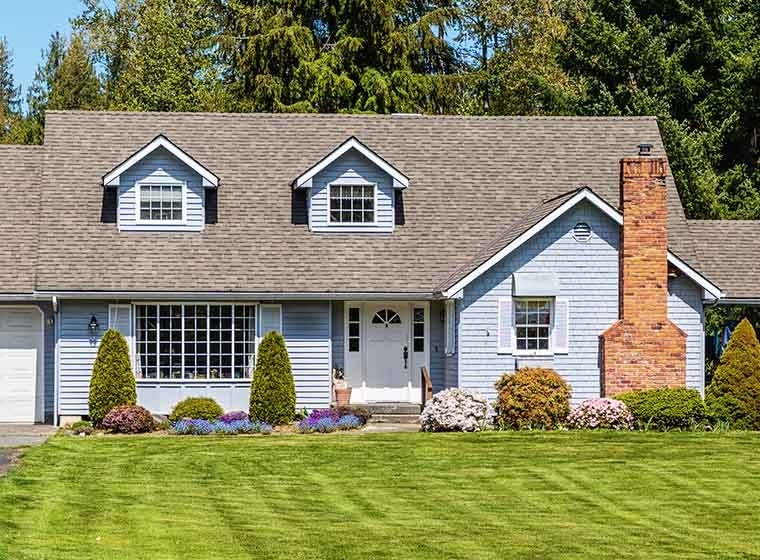Today, everyone is doing their part in keeping the environment safe. Others start right by building their eco-friendly gardens at home. Investing your money in eco-friendly design and maintenance will protect the environment and offer an appealing outdoor area that you can easily maintain. If you don’t know where to start, you can always talk to a local landscape company to explore the options you have.
Your landscapers aren’t only capable of building appealing areas but are also familiar with eco-friendly and more sustainable approaches. Below are the six ideas that will allow you to create a sustainable garden at home, enabling you to get a low-maintenance area that will make your property more vibrant.
Opt For Locally Acclimated Plants
In determining what trees or plants to place in your garden, look for locally acclimated flora because they’ll be the best feature of your house that will attract birds. It’ll also be helpful for local wildlife because it has already adapted to the local climate and amount of rainfall. After planting them, you don’t have to maintain them regularly.
That’s because they’re resistant to local diseases and pests. Because you won’t need to water them regularly, apply pesticides, or use fertilizers, they’re cheaper to maintain and handle, making them an eco-friendly option if you’re busy with work or other matters.
Install Ground Cover, Not Grass
Using ground covers is more beneficial than grass. It covers the ground. You also won’t have to apply herbicides or pesticides, water regularly, or mow. If your landscape is in a more shaded area, use moss because they’ll still be healthy even on the warmest days of summer. It’s also comfortable for your feet if you decide to play barefoot.
Likewise, clover is the best choice for gardens that get a lot of sunlight. It helps reduce soil compaction, feels comfortable underfoot, smells good, and stays healthy during the worst case of drought. It’ll also attract bees, allowing these tiny creatures to build their habitats in your garden.
You might have to mow them regularly to keep bees away and maintain their health. You can also use creeping perennials for ground cover. Many of them feel soft underfoot, require minimal maintenance, and smell good.
Learn More About Composting
If you want to produce natural fertilizers for your plants, you can start learning about composting. You’ll need soil and a partly sunny area of your property, for starters. If you don’t want them to make your garden look awkward, you can install a compost bin.
Then, start mixing garden and household waste. That can include cardboard, weeds, wood shavings, newspapers, eggshells, and fruit and vegetable scraps.
Mixing a few of these will attract compost-eating bugs that will allow you to get natural, nutritious compost for your garden within six to nine months. Bear in mind not to mix your animal waste in your compost.
Build Terraces on Slopes
It can be challenging to maintain and mow steep slopes. These areas can also lead to excessive stormwater runoff and soil erosion. But designing a terrace is an appealing solution to prevent those environmental problems.
Terracing entails leveling off steep areas to become a planted area for herb or flower gardens or mulching and shrubs. It allows the planted areas to absorb rainwater instead of allowing it to flow down the slope. Despite the cost of installing a terrace, terraces are undoubtedly an appealing and beneficial feature of your property.
Don’t Use Fertilizers
Most store-bought fertilizers contain chemicals that your lawn might not need or benefit from. Furthermore, they don’t supply the required nutrients, making your plants or trees vulnerable to diseases. That will also make your garden dependent on the harmful chemicals that caused the problem.
For your plants’ health, you can use organic, natural fertilizers. Only use store-bought products if necessary.
Make sure also to clean up the excessive fertilizers that land on your walkway. You also have to avoid using fertilizers near water supply lines. If you’re worried about your lawn, you can completely omit the usage of fertilizers. Instead, you can use compose, plant groundcovers, and mow regularly as part of your lawn maintenance routine.
Have Plants That Absorb Water
Building a rain garden is another appealing feature for your property. It’ll help minimize stormwater runoff by absorbing the water. Using deep soils and flood-resistant plants will help your garden absorb vast amounts of stormwater, filtering out pollutants. On top of that, rain gardens maximize your lawn’s space while providing you with vibrant, low-maintenance, and cheaper gardens.
If you want to save money and keep the environment safe, you can incorporate these eco-friendly options. It’ll also make overall maintenance more manageable. Follow these tips if you want to build an attractive garden that requires minimal maintenance, giving you more time to enjoy your hobby or look for a new one.


